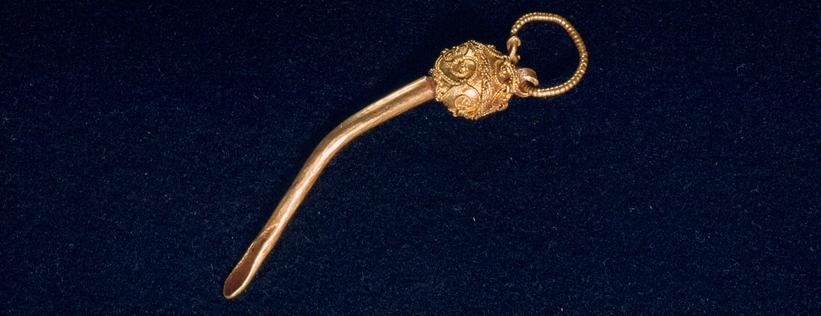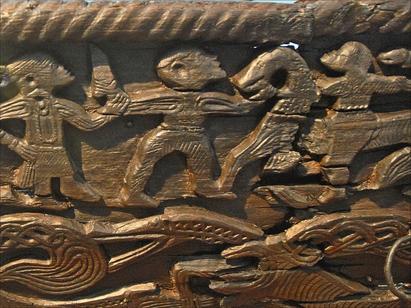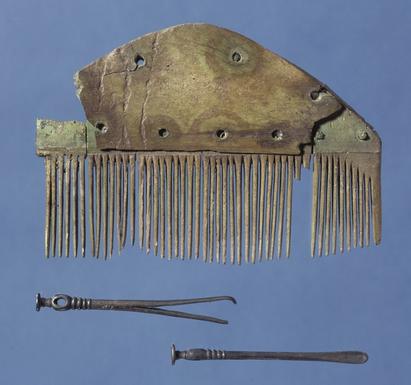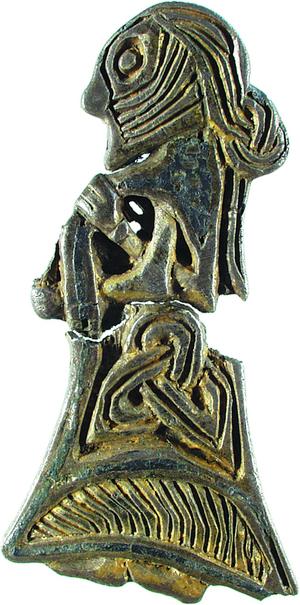What did the Vikings look like?

Picture a Viking. Do you see a young, strong, red- or blonde-haired man in front of you? Perhaps there is something in this. The Arabic author Ibn Fadlan described the Vikings as follows: ”I have never seen people with a more perfect body build. They are like date palms and their skin is reddish".
The most important knowledge about the physical appearance of the Vikings comes from archaeological finds of skeletons from the period. Up until now, around 500 Viking skeletons have been found in Denmark. However, here the picture of the big, strong Viking fades a little. The bones show a population that suffered from tooth problems and aching joints, for instance.
Big strong Vikings?
The physical build of the Vikings was much like our own. But we can assume that they must have been more muscular than we are today, because of the hard physical work that they did.
Masculine women and feminine men

The faces of men and women in the Viking Age were more alike than they are today. The women’s faces were more masculine than women’s today, with prominent brow ridges. On the other hand, the Viking man’s appearance was more feminine than that of men today, with a less prominent jaw and brow ridges.
These ambiguous facial features mean that it is difficult to decide upon a Viking skeleton’s sex based on the skull alone. Therefore, other traits need to be studied in order to identify the sex of skeletons. Pelvis width can be very useful in this respect.
Red- or blonde-haired Vikings?
Genetic research has shown that the Vikings in West Scandinavia, and therefore in Denmark, were mostly red-haired. However, in North Scandinavia, in the area around Stockholm, blonde hair was dominant.
Hygiene and beauty

Archaeological finds of ”beauty items” from the Viking period show that such equipment has not significantly changed over the years. If we examine “the toilet bags” of the Vikings we find beautiful patterned combs, ear picks and tweezers. Wear marks on teeth also indicate that tooth picks were used.
Make-up can also be added to the list of beauty items. A Spanish Arab who visited Hedeby around the year 1000 described how both men and women in the town wore make-up to look younger and more attractive.
In England Viking men reportedly had great success with the local women. The Viking males were apparently clean and pleasant smelling, as they took a bath on Saturdays, combed their hair and were well dressed.
Haircut and beard

The hair and beard were of major importance to the Viking man. This can be seen in royal bynames like Sweyn Forkbeard, whose beard was probably divided in two, and Harald Fairhair, who must have had a fine head of hair. The numerous finds of combs show that people combed their hair regularly.
Certain sources emphasise this, such as an anonymous letter written in Old English. In this a man advises his brother to stick with the prevailing Anglo-Saxon style and not enter into the “Danish fashion”, which is described as a reverse “mullet” hairstyle, with long hair on top of the head and short hair at the back.
Beards were also well groomed. This can be seen, for example, on a carved male head found at the Oseberg ship burial in Norway. The male has a long elegant moustache and beard.
The Viking women’s hair was also well kept. It was typically long and could be attractively styled. We can see this on small silver and bronze figures.
